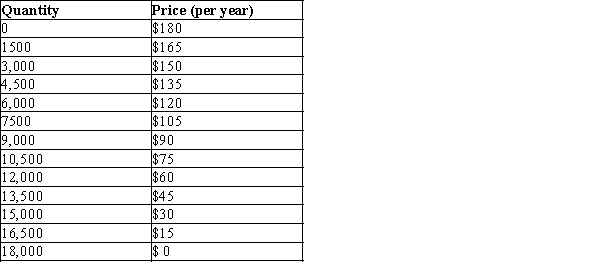Multiple Choice
Table 17-5
The information in the table below shows the total demand for premium-channel digital cable TV subscriptions in a small urban market. Assume that each digital cable TV operator pays a fixed cost of $200,000 (per year) to provide premium digital channels in the market area and that the marginal cost of providing the premium channel service to a household is zero. 
-Refer to Table 17-5. Assume there are two profit-maximizing digital cable TV companies operating in this market. Further assume that they are not able to collude on the price and quantity of premium digital channel subscriptions to sell. What price will premium digital channel cable TV subscriptions be sold at when this market reaches a Nash equilibrium?
A) $30
B) $60
C) $90
D) $120
Correct Answer:

Verified
Correct Answer:
Verified
Q64: The theory of oligopoly provides another reason
Q65: A group of firms that act in
Q66: Table 17-26<br>Two prescription drug manufacturers (Firm A
Q67: Figure 17-2. Two companies, Acme and Pinnacle,
Q68: Table 17-32<br>Suppose that Angelina and Brad own
Q70: Table 17-13<br>Two home-improvement stores (Lopes and HomeMax)
Q71: Table 17-9<br>The table shows the demand schedule
Q72: Very often, the reason that players can
Q74: Figure 17-3. Hector and Bart are roommates.
Q150: A dominant strategy is a strategy that